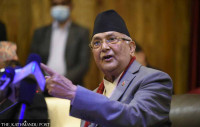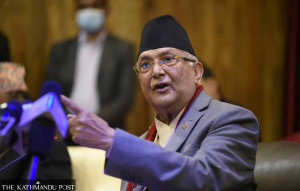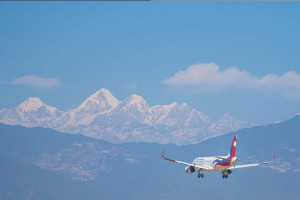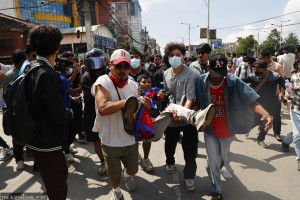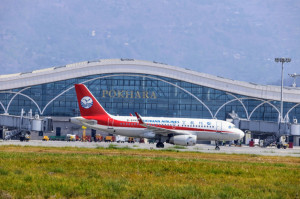Editorial
Volunteering for violence
UML chair KP Oli’s bid to create a parallel security organ must be resisted.
Whenever KP Sharma Oli, the CPN-UML chairperson, has felt under political or personal threat, he has sought to cultivate a militant youth wing in the party. Last time, when he was removed as prime minister in 2021, he revived the Youth Force, the quasi-militant outfit. Back then the main target of Oli’s ire was the faction of Madhav Kumar Nepal, senior UML leader, which had decided to back the premiership of Sher Bahadur Deuba by breaking ranks with the party. This time, following the Gen Z revolt that removed him from power, Oli has created a new youth militant organisation, the National Volunteer Force (NVF). Oli was the main target of the irate anti-government protests at the start of September after his government gunned down 19 unarmed protesters on the first day of the agitation. The next day, he had to literally run for his life as the prime minister’s residence in Baluwatar was set on fire. Following his ouster, the new Sushila Karki government has significantly cut down his security detail—even as the risks against him have multiplied. Oli thus seems to have calculated that a personal defence force was sorely needed.
Lest there be any doubt about the nature of the new outfit, the UML chair has let it be known that the ‘volunteer force’ will provide security to other people as well as private and public property. In other words, it will act as a parallel organ to the state’s security forces, which constitutionally are the only bodies mandated to use force to impose the law. Besides looking after Oli’s personal well-being, the other aim of the new body seems to be to intimidate the UML’s political opponents as well as the government. If they act against his interest—for instance by lobbying for his arrest for the September 8 killings—Oli could unleash anarchy with the help of the new volunteer force. Or that at least is the implied threat. If the history of such bodies in Nepal is any guide, they are also invariably used to intimidate opponents and voters in the lead up to elections. With the UML under Oli unsure of its poll prospects, the new force could be employed to either spoil the election climate or to influence its outcome. Again, Oli is making all these calculations with the aim of retaining the chair of his party, escaping any blame for the September killings and using intimidation to come back to power in the government.
This attempt to create a parallel state security body must be resisted, both from within and without the UML. If not, other political forces could also feel compelled to cultivate similar outfits, if only to give a counter to the NVF’s intimidation tactics. This will be a dangerous development even as the climate is slowly being built for the March 5 elections—particularly after the Nepali Congress made an institutional decision to take part in the polls. Oli’s quest to turn the tide of history on the back of brute force is destined to fail. The only question is: How much harm will it do before that?




 10.12°C Kathmandu
10.12°C Kathmandu

